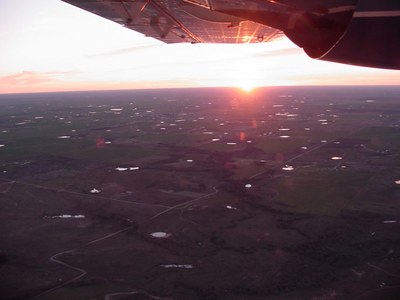Stock Ponds: Texas' Overlooked Duck Magnets
 Traditional waterfowl habitats like bottomland hardwoods of East Texas, rice prairies and coastal marshes of the Gulf Coast, and the playa wetlands of the High Plains have all seen decreases in quality and quantity of the last few decades. Livestock ponds (stock ponds) in interior Texas are becoming the most abundant wetland habitat, and Texas Parks and Wildlife Department waterfowl surveys indicate more ducks now use stock tanks than traditional wintering grounds.
Traditional waterfowl habitats like bottomland hardwoods of East Texas, rice prairies and coastal marshes of the Gulf Coast, and the playa wetlands of the High Plains have all seen decreases in quality and quantity of the last few decades. Livestock ponds (stock ponds) in interior Texas are becoming the most abundant wetland habitat, and Texas Parks and Wildlife Department waterfowl surveys indicate more ducks now use stock tanks than traditional wintering grounds.
Stock ponds are small, man-made impoundments that serve as a water supply for livestock or aid in soil conservation and flood control. A few are designated for recreational fishing. Savvy waterfowl hunters are finding they make great duck magnets. There are about 600,000 stock tanks of less than 40 acres dotting the interior landscape of Texas; they look a lot like the prairie potholes ducks utilize in the waterfowl breeding grounds and provide the same basic needs.
Reduced hunting pressure on stock tanks is an obvious draw for the birds, and with the majority of ponds located on private property, access does require effort and securing permission from landowners. Paying for access privileges, offering to help fix a broken gate or sometimes just sharing the bounty of the hunt are ways to get the conversation about your next duck hunt rolling.